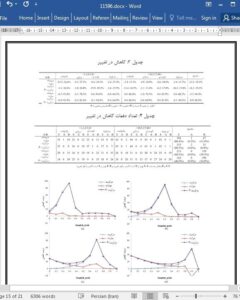Abstract
The demand for emergency medical service (EMS) has been rising over time, leading to the need for efficient yet effective techniques for managing ambulance logistics. Ambulance dispatching decisions in EMS assign ambulances to calls such that the response time is minimized. A notion of parallelism is developed for ambulance dispatching decisions that allows considering both idle and busy ambulances in parallel rather than just idle ones. The parallelism, applied upon the centrality policy found in literature, results in the parallelized centrality policy complementing and enhancing the centrality policy. The experimental analysis evidences that the parallelism significantly reduces response time by up to 43.4% over the existing approaches that only consider idle ambulances.
I. Introduction
THE DEMAND for emergency medical service (EMS) has been rising over time [see Fig. 1 for the number of emergency department (ED) visits by ambulance between 2003 and 2010 in the U.S.], leading to the need for efficient yet effective techniques for managing ambulance logistics. Response time, which is significantly influenced by the ambulance logistics, is the time taken to reach patient after an emergency call is received, and it has been used as an important performance measure since it directly affects the welfare and safety of patients. For example, sudden cardiac arrest is a leading cause of deaths in the U.S., responsible for more than 350 000 deaths each year [2]. The effect ofa1m reduction in response time for patients with sudden cardiac arrest is estimated to increase survival rate by 24% [3].
VI. Conclusion and Future Work
A notion of parallelism is developed for ambulance dispatching decisions that allow considering both idle and busy units in parallel rather than just idle ones. The parallelism, applied upon the centrality policy, results in the parallelized centrality policy complementing and enhancing the centrality policy in average as well as variation of response time. The parallelized centrality policy involves two calibration parameters, centrality parameter and parallelism parameter, which enable to achieve portable performance adaptively to various operational scenarios. In order to maximize the benefits of the policy, the parameter values have to be carefully chosen according to the characteristics of the operating environment factoring in such as information uncertainty, probability of transferring to hospital, size of service area, size of fleet, and call distribution pattern.











